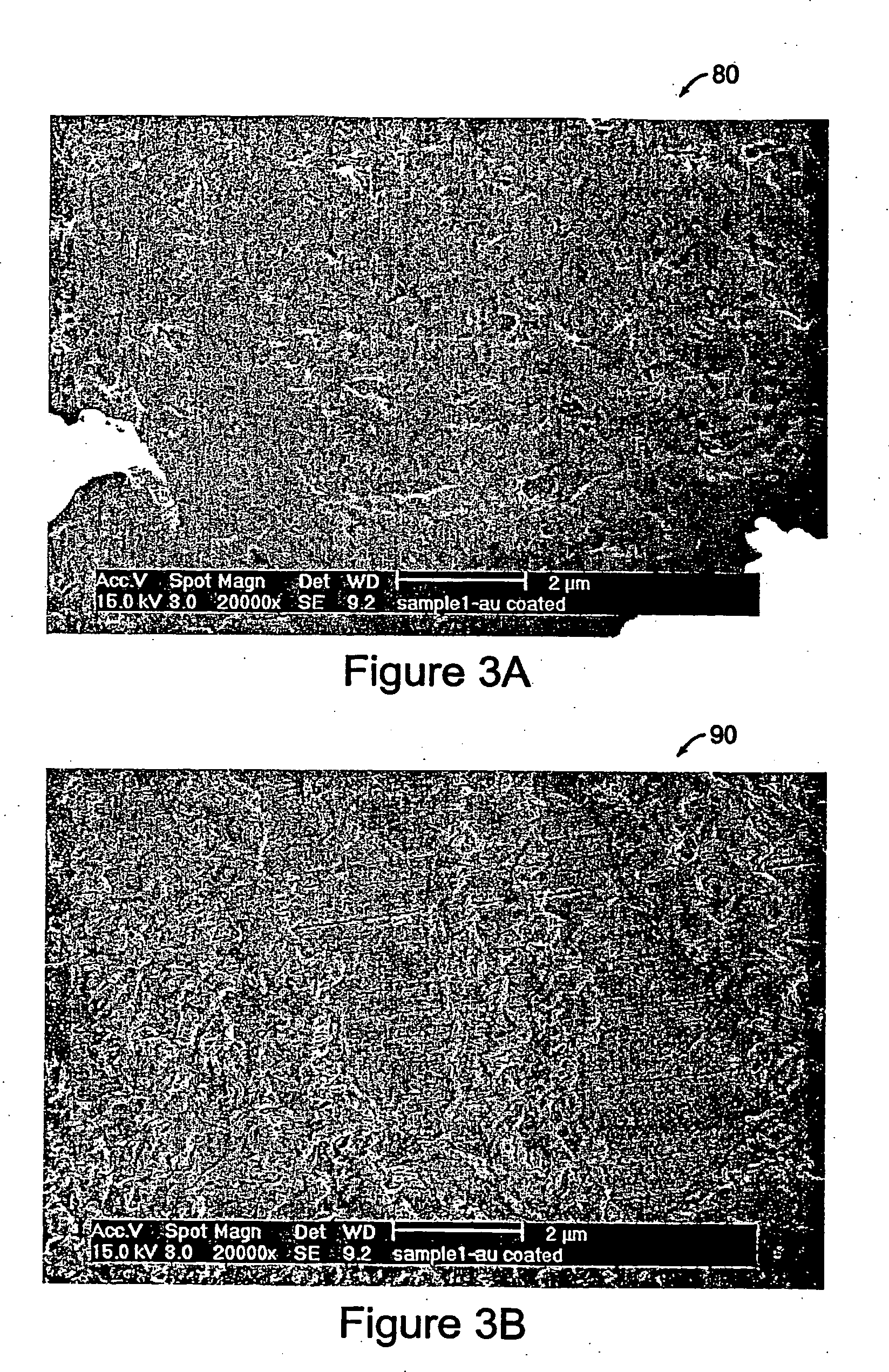Layered aligned polymer structures and methods of making same
a polymer structure and alignment technology, applied in the direction of prosthesis, monocomponent protein artificial filaments, bandages, etc., can solve the problems of weak random orientation of collagen materials, lack of desired mechanical and optical properties, and rapid deformation, so as to achieve the effect of increasing spacing
- Summary
- Abstract
- Description
- Claims
- Application Information
AI Technical Summary
Benefits of technology
Problems solved by technology
Method used
Image
Examples
example 1
[0072] As one example of a preferred embodiment of this present invention, a metal disk is used as a deposition substrate. The disk is mounted on a spin-coating-type apparatus. A chamber is built around the apparatus to control the temperature and the relative humidity. The disk can be spun at a specified rate. This embodiment is illustrated in FIG. 1.
[0073] A solution of type I (Vitrogen™) collagen is chilled to 4-6° C. Bight ml of the collagen solution is mixed with 1 ml of 10× phosphate-buffered saline solution (0.2 M Na2HPO4, 1.3M NaCl, pH=7.4) and 1 ml of 0.1M NaOH. The pH is adjusted to 7.4±0.2 by adding 0.1M HCl. The solution is warmed to the test temperature, then steadily dripped onto the rotating substrate 16. The collagen gels form a uniform sub-micron thick sheet. This process is described with respect to the flow chart illustrated in FIG. 2. Nematic stacks are prepared by cutting out sections of the radially-aligned collagen fiber sheets, and stacking them orthogonally...
example 2
[0074] As a second example of a preferred embodiment of the present invention, sample disks 104 with T-slots cut into their surfaces are mounted on a disk 102 rotating at a specified rate as shown in FIGS. 4A and 4B. In accordance with a preferred embodiment of the present invention, the first layer of aligned associating fibrils is prepared by flowing the solution into channel of sample disks, which are on the rotating bottom disk. The centrifugal motion generates a shearing flow, which produces a thin layer and aids in aligning the growing associating polymers. The sample disks are then rotated 90 degrees, or to another specified angle, and the second layer is applied, which aligns with the specified angle relative to the first. A solution of Vitrogen™ collagen is chilled to 4-6° C. Eight ml of the collagen solution is mixed with 1 ml of 10× phosphate-buffered saline solution (0.2 M Na2HPO4, 1.3M NaCl pH=7.4) and 1 ml of 0.1M NaOH. The pH is adjusted to 7.4±0.2 by adding 0.1M HCl....
example 3
[0075] Another preferred embodiment of the present invention includes the monomer solution being placed in a temperature-controlled bowl as shown in FIGS. 5A-5C. In FIG. 5A, the polymer solution is subjected to a shearing flow by rotating the ball in one direction, or by oscillating in the same rotation plane. The polymer associates during this process. In FIG. 5B, the ball is rotated or oscillated in the orthogonal plane, to generate a layer of associated polymers orthogonal to the first layer. In FIG. 5C a three-dimensional (3D) rendering of the method is illustrated. A ball 122 with a diameter a few microns smaller than the bowl 128 diameter is placed in the bowl. A shaft 126 attached to the ball rotates the ball first in one direction, generating a shearing flow, during which time the monomer polymerizes. After a designated gelation period, fresh monomer solution may be introduced to the bowl, and the ball is rotated in the orthogonal direction, creating a layer orthogonally-ali...
PUM
| Property | Measurement | Unit |
|---|---|---|
| angle | aaaaa | aaaaa |
| thick | aaaaa | aaaaa |
| angle | aaaaa | aaaaa |
Abstract
Description
Claims
Application Information
 Login to View More
Login to View More - R&D
- Intellectual Property
- Life Sciences
- Materials
- Tech Scout
- Unparalleled Data Quality
- Higher Quality Content
- 60% Fewer Hallucinations
Browse by: Latest US Patents, China's latest patents, Technical Efficacy Thesaurus, Application Domain, Technology Topic, Popular Technical Reports.
© 2025 PatSnap. All rights reserved.Legal|Privacy policy|Modern Slavery Act Transparency Statement|Sitemap|About US| Contact US: help@patsnap.com



